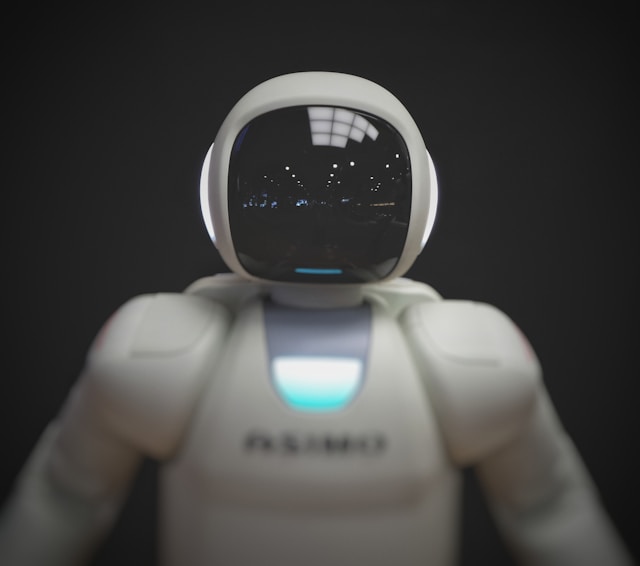In the last few decades, the manufacturing world has undergone a remarkable transformation. From manually operated machinery to highly automated production lines, the factory floor has evolved dramatically. At the heart of this transformation lies a powerful catalyst: robotics. Today, robots are no longer confined to isolated cages handling repetitive tasks; they work alongside humans, performing complex operations with precision and consistency.
Robotics is not just a buzzword or futuristic concept; it’s a thriving, dynamic field that’s reshaping how goods are produced, packaged, and delivered. Manufacturers across industries are embracing collaborative robots—also known as cobots—as essential components in their journey toward smarter, safer, and more efficient production systems. In this blog post, we explore how robotics has evolved and continues to revolutionize modern manufacturing processes.
The Historical Context of Robotics in Manufacturing
From Mechanization to Automation
The integration of machinery in manufacturing dates back to the Industrial Revolution. Early machines like looms, steam engines, and assembly lines laid the groundwork for what would later become a highly mechanized process. These advancements helped manufacturers scale production and reduce dependence on manual labor.
By the 20th century, especially in the post-WWII era, automation started to take hold. The first industrial robot, Unimate, was introduced in the 1960s at a General Motors factory. It could perform dangerous tasks such as welding and material handling, ushering in a new era of industrial automation.
Rise of Robotics in the Late 20th Century
As computing technology advanced, so did robotics. Sensors, microprocessors, and improved software enabled more precise and programmable robots. By the 1980s and 1990s, Japan, Germany, and the United States were investing heavily in robotic technologies. Robotics started to become a core part of automotive and electronics manufacturing.
Despite early limitations, the cost of robotic systems began to drop, and flexibility increased. What began as expensive, rigid systems has now evolved into adaptable, affordable solutions suitable for small and medium-sized enterprises (SMEs).
Defining Modern Robotics
What Are Industrial Robots?
Industrial robots are programmable mechanical devices that can perform tasks in manufacturing environments. They are designed to handle activities such as welding, painting, assembly, pick-and-place operations, and packaging with high levels of accuracy and repeatability.
These machines often feature robotic arms with multiple degrees of freedom, allowing them to move in complex ways that mimic human motion. Most industrial robots fall into categories such as articulated robots, SCARA (Selective Compliance Assembly Robot Arm), Cartesian robots, and delta robots.
Introduction to Collaborative Robots (Cobots)
One of the most significant advancements in recent years is the rise of collaborative robots. Unlike traditional robots, which usually work in isolation for safety reasons, cobots are designed to work safely alongside human workers. Equipped with advanced sensors, AI capabilities, and force-limiting technology, cobots enhance productivity without replacing human input.
Cobots are especially popular in tasks that require precision and repetitive motion but still need some level of human oversight or flexibility—such as quality inspection, light assembly, and machine tending.
Benefits of Robotics in Manufacturing
Increased Productivity
One of the most obvious benefits of integrating robotics in manufacturing is the dramatic boost in productivity. Robots can operate continuously without breaks, fatigue, or loss of concentration. This allows companies to maintain high levels of output and reduce downtime, especially during peak demand periods.
Improved Quality and Precision
Human errors are inevitable, especially in repetitive or detail-oriented tasks. Robotics minimizes variability and increases the accuracy of processes. In industries like electronics, pharmaceuticals, and automotive, where precision is critical, robots can consistently deliver high-quality results.
Cost Efficiency
While the initial investment in robotics can be significant, the long-term savings are substantial. Robots reduce labor costs, minimize material waste, and increase operational efficiency. Over time, the return on investment (ROI) is favorable, especially when factoring in the reduced need for rework and increased uptime.
Enhanced Workplace Safety
Robotics takes over hazardous tasks—such as working with toxic materials, heavy lifting, or exposure to high temperatures—thereby reducing workplace injuries. Safety standards and certifications ensure that robots meet stringent requirements before being deployed, particularly in environments where human interaction is necessary.
Human-Machine Collaboration: A New Frontier
The Changing Role of Human Workers
Contrary to fears of job displacement, robotics is redefining roles rather than eliminating them. Workers are transitioning from manual operators to robot supervisors, programmers, and maintenance specialists. This shift requires upskilling but also creates opportunities for higher-value roles within organizations.
Rather than competing with humans, robots are complementing their capabilities. While robots handle repetitive or hazardous tasks, humans contribute strategic thinking, problem-solving, and creativity—elements that machines cannot replicate.
Examples of Successful Human-Robot Collaboration
In factories across the globe, cobots are transforming how production lines function. For instance, in the aerospace industry, robots assist technicians in drilling holes and applying adhesives with unmatched precision. In the food and beverage sector, cobots handle delicate packaging without compromising quality.
These real-world applications demonstrate how robotics can enhance rather than hinder human efforts. This synergy leads to better outcomes for both employees and employers.
Emerging Technologies Empowering Robotics
Artificial Intelligence and Machine Learning
The integration of AI and machine learning is revolutionizing robotics. Intelligent robots can now analyze data in real-time, adapt to changing conditions, and make autonomous decisions. This makes them more useful in dynamic environments where flexibility is essential.
For example, vision-guided robots can identify defects on a production line, categorize items, or navigate complex paths without direct programming.
The Internet of Things (IoT)
IoT connects robots to centralized systems, enabling real-time monitoring, diagnostics, and performance optimization. Sensors embedded in robotic systems collect data, which can be used to predict maintenance needs, improve workflow, and reduce downtime.
Smart factories, often referred to as Industry 4.0, leverage this connectivity to create highly responsive and efficient manufacturing ecosystems.
3D Printing and Additive Manufacturing
3D printing is becoming an integral part of robotics. Robots equipped with additive manufacturing tools can create parts on-demand, significantly reducing supply chain dependencies. This synergy is especially valuable in aerospace, automotive, and custom manufacturing sectors.
Applications of Robotics Across Manufacturing Sectors
Automotive Industry
Robotics has long been a staple in car manufacturing. From welding car bodies to installing windshields, robots are involved in nearly every step of the production process. Automation has enabled automotive companies to improve throughput and maintain consistent quality.
Today, with electric vehicles and autonomous cars becoming more prevalent, robotics is playing a pivotal role in assembling sensitive electronics and battery systems.
Electronics and Semiconductors
In semiconductor fabrication, precision is everything. Robotics ensures that wafers are handled without contamination, components are placed accurately, and testing is conducted with micron-level accuracy. Cleanroom robots are designed to operate in ultra-sterile environments.
Pharmaceuticals and Medical Device Manufacturing
Robots are increasingly used in pharmaceutical manufacturing to ensure hygiene, accuracy, and efficiency. From dispensing precise dosages to packing blister packs, robotics enhances product safety and regulatory compliance.
Additionally, surgical robots are now used in hospitals for minimally invasive procedures, showing that the applications of robotics extend well beyond traditional factories.
Food and Beverage Industry
The food industry faces unique challenges related to hygiene, speed, and gentle handling. Robots equipped with soft grippers can sort, package, and palletize food items without causing damage. Their ability to operate continuously also supports large-scale production without compromising safety standards.

